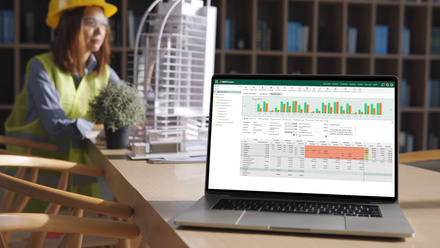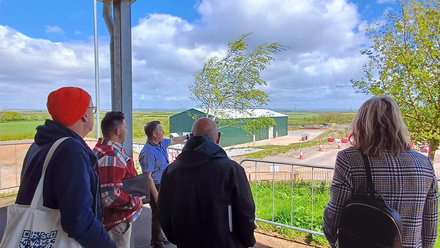*Sponsored content from Next Tech.
A construction project is typically comprised of an inordinate number of processes across multiple levels – from physical labour on the ground to drawing up the plans in the office. On top of that, there are many different third parties attempting to work around each other. Not only does this lead to a somewhat messy situation, but it breeds waste and inefficiencies; particularly when it comes to time.
Compartmentalised information, miscommunications and overlooked factors can make meeting one’s milestones and deadlines a very difficult task. Most construction professionals try to compensate by setting low expectations when it comes to deadlines; we at Next would like to suggest an alternative solution, however. In this blog, we will explore how project management software can save construction professionals so much time at every step of the journey.
Project oversight

The first step in any construction project is to establish the key contacts, responsibilities, budget, deadline and other such details. This is why the dashboard of a project management software package will typically display this information. Stakeholders can see at a glance who’s involved, as well as their designated role and contact details.
While seemingly obvious, we believe that the road to a successful project begins with setting everybody on the same page. Alignment and communication are absolutely paramount at the beginning of a project.
Documentation
Once the work commences, it’s important to know who did what and when; what was the state of the work at various points, and what checks have been carried out. It therefore follows that it’s useful to have such documents stored in one suppository, where all stakeholders can store and retrieve as needed. This can be a major boon to time saving as it saves hours of backtracking through texts, email chains and paper files.
Another way that this can help to save time lies in the work orders. If a worker is assigned a task without any context then the desired result may not be realised. By providing documentation that details what needs doing and why, such as meeting compliance or client specifications, you increase the chances that the job won’t need doing a second time.
Deadline and budget forecasting
Workers can log into the project management software via their smartphone or tablet and log what they have done and how many hours they have worked. The platform automatically factors in how much money was spent in both hours worked and building materials consumed and adds such information to both the deadline and budget forecasting modules.
Having the ability to log in and instantly decipher how well the project is going can allow decision makers to respond to identify bottlenecks and address them.
Less negativity from clients

Clients can get nervous when they feel that they aren’t in the loop. They consequently barrage project managers with emails, voicemails and texts demanding progress updates and explanations for setbacks. A project management software package allows clients to gain visibility of the project so that they can see for themselves how much progress has been made and what is left to do. This frees construction professionals to focus on the job at hand.
Time is money
The sooner a project can be completed, the less costly it is and the happier the client. Every project manager’s goal is to run a smooth operation with misunderstandings, frustrating setbacks, scheduling errors and sub-par work kept to a minimum.
Looking for some further guidance?
If you’d like to explore the application of project management software further, why not book a demo to see Next Project in action. As an FMB member, you can benefit from preferential rates on our services.
*Disclaimer: This blog post is sponsored content, which is independent of the FMB. Publication does not constitute endorsement or recommendation from the FMB.





